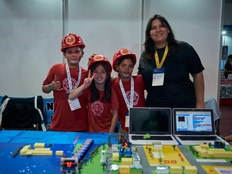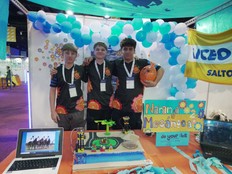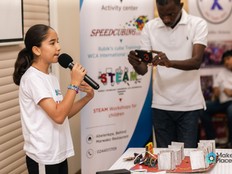Our project
Inspired by a visit from lifeguards to the classroom, we researched the accessibility and safety of blind individuals on beaches. We found that there are no systems in place to inform them about the real-time status of the beach. There are also no alerts for dangerous areas of entry into the sea, nor any notifications to lifeguards when someone enters such areas. This means that blind individuals depend on others to safely enjoy the beach.
We developed an accessibility and safety system for people with blindness or low vision, using micro:bit boards to provide real-time updates on beach conditions via sound alerts. Additionally, sensors installed on flags placed on the coastline in hazardous areas will emit sound alerts and notify lifeguards when someone enters the water, enabling quick intervention. This second system is beneficial for all beachgoers.
Our inspiration
Inspired by a visit from lifeguards, the students developed an accessibility and safety system for people with blindness or low vision, using micro:bit boards to provide real-time updates on beach conditions via sound alerts. Additionally, sensors installed on flags placed on the coastline in hazardous areas emit sound alerts and notify lifeguards when someone enters the water, allowing for quick intervention. Furthermore, they created a device that helps individuals know whether they are moving closer to or farther away from the lifeguard station.





